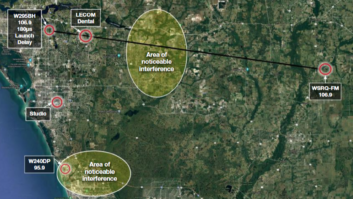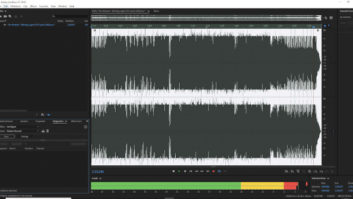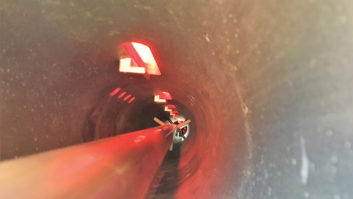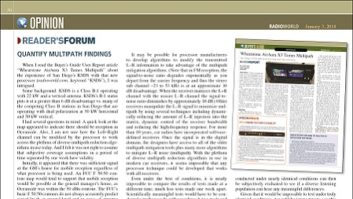Responding to “Dealing With the Multipath Phenomenon,” Feb. 1 issue:
Back in the late 1980s, Los Angeles’ KIIS(FM) was getting high ratings; but with an ERP of 8,000 watts, we needed to get every benefit possible for that power level.
The market included several counties in southern California, but with the exception of the metropolitan Los Angeles and Orange County areas, San Gabriel Valley and San Fernando Valley communities, there are mountains and hills involved. That creates multipath for many listeners in those areas.
I personally live in an area with mountains blocking a direct signal from our transmitter on Mt. Wilson and could receive the station perfectly up to about a half mile away. At home it was still listenable in mono but scratchy in stereo.

Upon purchasing and installing a new solid-state Nautel 10 kW transmitter, we noticed that its metering showed a slight mismatch to the antenna that had not shown up on our old RCA tube-type rig. We arranged a night soon after that for John Hignite’s steeplejacks and a service technician from Jampro Antennas to come and work on the issue. Using a network analyzer below and adjusting the two-bay directional antenna on top of our tall pole, the SWR was brought down to virtually 1:1. Any reflected power back down the transmission line from the antenna to the transmitter will create the multipath effect caused by that delayed energy mixing and returning to the antenna. The result is similar to a receiver receiving one signal directly with the same signal bouncing off something, being delayed and received over a longer path at the same time. Multipath is multipath, regardless of how it is created. There was definitely an improvement in reception at my home but room for more.
At the time, there were papers written and discussions on how the multipath effect increased with stereo separation. We had several homebrew units on KIIS(FM) at the time, including microphone preamps and processors, air-chain audio processors controlled by joy-sticks, studio switchers and a lot of control equipment. It was normal for our engineers to build something on our own that might improve multipath.
I built the unit pictured above using a design by Paul Donahue, Gannett’s corporate director of engineering, who had his office in our facility. It used the theory of limiting the LÐR component such that it would never exceed the L+R audio. It certainly was not as complex as the Wheatstone version, no algorithms or microprocessors, just basically analog audio and comparators controlling the L+R levels.
This would not have worked with extreme L+R such as old Beatles songs that had the vocal on one channel and the music on the other or fancy promos where the audio would ping-pong between channels; we did not air such things anyway. The unit did work and was used on the air for several years. The reception was significantly improved at home, but I still had the multipath caused by the nearby mountains. Two of the three sources of multipath that we could control had been greatly reduced.
The author is a retired radio engineer for iHeartMedia living in La Crescenta, Calif.






